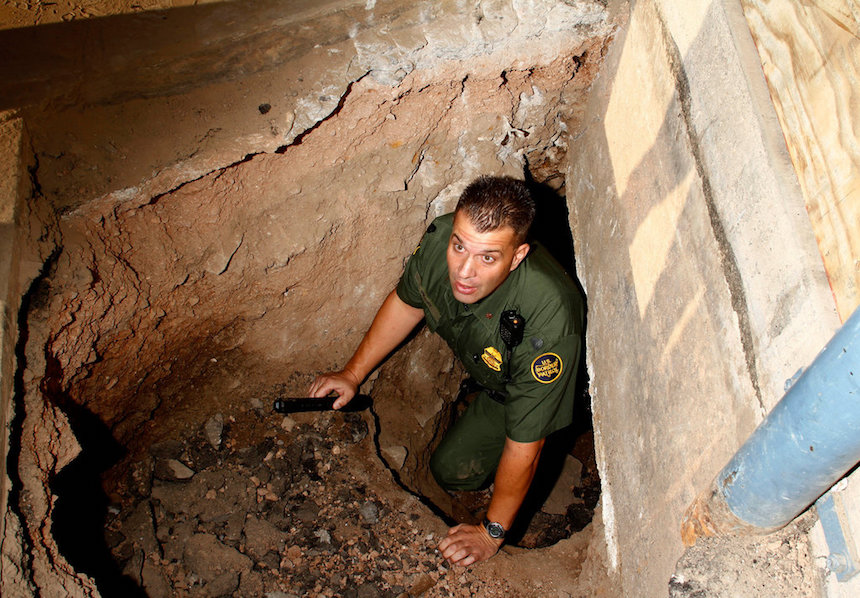
A U.S. government report shows that drug traffickers adapt their techniques in response to increased overland security, undermining the argument that a border wall will prevent the entry of illicit drugs, InSight Crime reports.
The GAO study released on 1 May analyzes the extent to which alternative tactics are used by criminal organizations. The United States Government Accountability Office’s study cites Department of Homeland Security (DHS) data showing that there were 67 discovered cross-border tunnels, 534 ultralight aircraft incursions, and 309 drug smuggling incidents involving fishing and recreational vessels along U.S. mainland borders from 2011 through 2016.
The number of known smuggling events involving these methods generally declined over this period, but they remain threats, the study says.
Organized Crime and Corruption Reporting Project (OCCRP) notes that in his election campaign, President Trump promised to build a wall along the Mexican border to prevent people and drugs from entering the United States.
Reuters reported in February that its journalists had seen a DHSinternal study that says the “wall” would be a series of fences and walls and that it would cost as much as $21.6 billion.
Meanwhile, drug and people smugglers welcomed the idea of a wall, telling the New York Times that the higher the wall, the higher their profit.
“This is never going to stop, neither the narco trafficking nor the illegals,” a drug trafficker told the Times. “There will be more tunnels. More holes. If it doesn’t go over, it will go under.”
The fees criminal networks charge to transport people and drugs will just increase, smugglers claim.
The techniques criminals adopt to bypass land barriers remain uncommon in comparison to the bulk of smuggling, which is still done through official points, but reports suggest that criminal organizations are inventive when it comes to adapting and moving drugs across the border anyway.
OCCRPsays that the U.S. Drug Enforcement Administration (DEA) notes that most of the drugs enter the United States concealed in passenger vehicles or hidden among legitimate goods on freight vehicles.
The report says that there are better ways than building a wall to address cross-border trafficking. These would include improved detection technology, inter-agency coordination, and better techniques for gathering and analyzing information and intelligence.
This article is published courtesy of Homeland Security News Wire.

